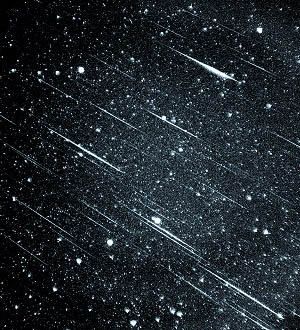Leonid Meteor Shower Active Through Nov. 20
By Meteorologist Malika Dudley / Email: malika@mauinow.com
The Leonid Meteor Shower is active in Hawaiʻi through November 20, 2014. The show in the sky began Thursday November 13, 2014. According to the Bishop Museum, the Leonids were responsible for the most spectacular meteor shower over Hawaiʻi in recent times, the 2001 meteor shower. An intense peak occurs every 33 to 34 years.
The greatest shower on record prior to that, the 1966 shower, also had Leo as its radiant. The Earth Sky website describes that shower as “a beautiful night, where meteors did briefly fall like rain.” During a time span of 15 minutes, rates were estimated as high as thousands of meteors per minute. The next shower of that caliber isn’t expected again until the turn of the century.
This year we do not expect the Leonid shower to rival the events mentioned above, however viewing conditions will be better than they’ve been for almost any other shower this year. Weather conditions are likely to cooperate as cooler, drier conditions fill in behind a weak front pushing through the island chain today. The moon phase is also favorable to prime viewing since the waning crescent doesn’t rise until early morning.
NASA describes the Leonids as a minor meteor shower with an estimated peak rate of 10 to 15 meteors per hour. Some have dubbed this shower ‘fascinatingly variable’, so cross your fingers for a better than average show.
The Leonids occur every year in November as earth passes through the orbital path of Comet Tempel-Tuttle.
Viewing tips:
- Mark your calendars! The Leonids are active from November 13 – 20 with peak nights November 16 into November 17 and November 17 into November 18. The best time to watch from Hawaiʻi on November 17th is between midnight and 02:30 a.m. when the moon rises. On November 18th best viewing will be between midnight and 03:20 a.m.
- This shower will appear to radiate from the constellation Leo the Lion but you don’t have to necessarily look right at the radiant as meteors will appear in all parts of the night sky.
- In general the best time to view a meteor shower is during the early morning hours when the shower activity is combined with normal random meteor activity.
- Dusk is the worst time to view meteors, as the night progresses the number of meteors that are visible will increase.
- Find the darkest place possible.
- Find an open area where no trees or buildings intrude into your view.
- Allow your eyes to adjust for at least 15 minutes.
- Get comfortable. Dress appropriately and bring something to recline or lay on
**Send us your photos of the meteor shower and we will share them with our MauiNow.com ohana! Email malika@mauinow.com**










